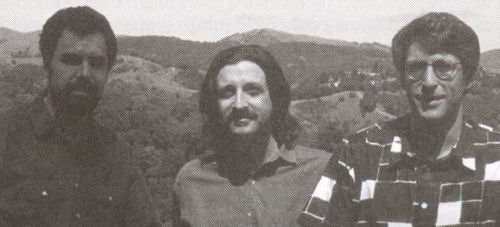Edward "Killer" Kilham started creating video games and graphics systems for the Apple II personal computer while he was at high school and moved on to the Amiga in 1985, for which he wrote a color font editing utility called The Calligrapher. He studied Computer Science at the University of Oregon, graduating with a Magna Cum Laude in 1990.
While still at university, Kilham worked on RoboSport for Maxis, and he joined LucasArts after graduating. He began developing a cinematic engine and officially joined Lawrence Holland's simulator team, which later became Totally Games, in 1991, combining his cinematic approach with Holland's simulator technology. The pair worked together on 1993's Star Wars: X-Wing and its 1994 sequel, Star Wars: TIE Fighter.

Edward Kilham (left) with Rusel DeMaria (center) and Lawrence Holland (right)
Edward "Killer" Kilham started creating video games and graphics systems for the Apple II personal computer while he was at high school and moved on to the Amiga in 1985, for which he wrote a color font editing utility called The Calligrapher. He studied Computer Science at the University of Oregon, graduating with a Magna Cum Laude in 1990.
While still at university, Kilham worked on RoboSport for Maxis, and he joined LucasArts after graduating. He began developing a cinematic engine and officially joined Lawrence Holland's simulator team, which later became Totally Games, in 1991, combining his cinematic approach with Holland's simulator technology. The pair worked together on 1993's Star Wars: X-Wing and its 1994 sequel, Star Wars: TIE Fighter.